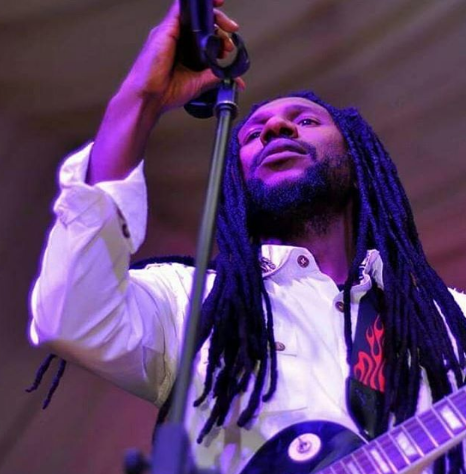Tamerri is a yearly festival that fuses culture and art, peddling a synchrony — that at perfect resonance — births an appreciation for African, especially Nigerian, cultural similarities and idiosyncrasies, as well as the modern arts that our ancient ways of life have inspired. This year, the two day 3rd edition of Tamerri pledged various forms of familiar attractions to make the creative enthusiast giddy with excitement, and new inspirations such as African cuisine to spice up (both literally – I had this fire asun – and metaphorically) the Festival.
Dance, music, poetry, fine art, and masquerade displays, were among the festival line up, and I had intended to participate in as much as I could. The curve of my excitement though was on a decline on the first day, as festivities were scheduled to begin at 2 pm, and despite making it to the festival at about 6 pm, nothing had begun. The venue was still being set up and there was no visible fun. I had paid for a two-day access and would not be patient enough to stick around for the delayed activities of day one to begin. I took my losses — one day worth of the ticket fee, Taxify ride fares, and my irreplaceable time — in good stride, as I made my way out of the first day of the Festival, disappointed.
I resolved to ignore most of the activities of the last day of Tamerri and set my heart to enjoy the poetry and music that the evening promised to bring. With Brymo headlining the music acts, I went to Heritage Africa Village Square with new enthusiasm for the final day of the festival. Learning a lesson from my experience with the time management lapses of the organisers the previous day, I arrived at the venue by 6:30 pm, an hour and a half after the scheduled time for poetry performances.
On my arrival, the sound setup for the event was not done yet, most of the musical acts for the evening were present, Brymo inclusive, and unsurprisingly, there were no poets present as performers. You see, I’d noticed at last year’s Tamerri that the poets on the line up seemed to be a bit of an afterthought despite poetry being advertised as an entertainment category on the festival flyers. Major music acts had custom e-posters but poets did not, this year was no different, and the organisers’ lack of preparation for the category did not meet them with an opportunity to salvage the situation; there was no poetry.
While the sound engineers continued to attempt to catch up to schedule, I took a walk around the premises. Heritage Africa Village Square is smaller than Sarius Palmetum — home to the first two editions of the Tamerri festival — but it exhumes the same earthiness. Stone chippings lining a walkway with a valley that made for the concert area laying to one side and vendor stands posited on the other. The concert area was layered with natural grass and a few pieces of upcycled furniture made from old tyres painted or wrapped in fabric and paired with Ankara print cushions to bring a tasty burst of colours that matched the green of the grass and contrasted a bamboo arena located at one part of the valley.
https://www.instagram.com/p/BqnHG_HH8kW/
During the course of the event, the availability of the venue as well as their exhibition building, and an open-air amphitheatre in the same land space was announced as being available to promote and support the growth of art in the city of Abuja. During my time roaming the Festival grounds, I couldn’t help but observe the scantiness of the audience in the arena, I thought lessons must have been taken from the previous Festival, but by all indications, the errors I noticed last year were inconsequential to the event organisers.
There were about 400 people in the arena at the time I took my first estimate, and this number was about half the crowd I observed at the music concert the previous year. In a more daring redo of the lack of publicity from 2017, this year’s Tamerri awareness only seemed to catch on at barely a week to the Festival opening. The untapped potential will transit into insignificance if Tamerri always expects to coast on its past glory.
By the time my exploration of the venue was done, the sound check had begun and Brymo used that to give the crowd a teaser of what was to come. At this point, another detraction from the positives of the previous years was clear in the quality of the sound. The sound setup had delayed the concert by so much time and for the patience exercised, we were left with a tolerable sound that floated over our heads lacking the depth to hold the weight of quality in our hearts. The real concert began by about 9 pm when Kespan, a Jos based musician, graced the stage with just a string instrument (a Kontigi, I think) and his voice.
He plucked his strings and sang everybody’s focus to his direction, the show couldn’t have had a better opener as he impressed with his ability to switch between simple-structured rap verses and captivating melodies despite the drawbacks of less than amazing sound quality. I wandered off to look for food after his performance, during that time, other artists graced the stage and Femi Leye would eventually get the people on their feet with an energetic performance session, the new energy could be felt in the air, the cold, fuelled by the harmattan breeze and greenery giving us fresh oxygen, was being thawed out of the countenance of Festival goers as the mostly instrumental filled jam session went on.
When it was past 11 pm with part of the lineups yet to grace the stage, I returned to the concert arena having been sedated by some fire asun that I extinguished with a bottle of kunu, and at my return, Brymo was just getting on stage, by just the aura of his presence everyone moved closer, slowly being enchanted by the magic of The Wizard of Awe (Chia this is such an appropriate moniker for Brymo) as he prepared to cast his spells. In the atmosphere of his charm, I noticed that the crowd had fallen to about half the number I estimated during my initial census, most likely because people ran out of patience and time to spare — the next day was a Monday — and left.
Brymo began his performance with two songs off Oṣó, first was “God is in your mind”, the instruments of the band spilt a new ambience over us as we became spellbound by the lyrical incantations that Brymo poured into his microphone, he followed up with “Entropy” and then a quick interlude of him speaking, he apologised on behalf of the organisers’ for the poor sound and then gave us more music.
https://www.instagram.com/p/BquiqUnnp2g/
He picked up the pace of our evening with a performance of “Femi”, he and the band had people falling and rising to the tunes like waves to moonlight, and for the first time in the show, I saw the beauty of the stage lights, how they spun and changed colours, cutting across each other’s path when they faced the sky, the trees seemed to join in the awestruck captivation of the audience, during the duration of his session. Brymo answered my hidden request, as the band began playing the intro to “Alajo Somolu”, at this point the crowd chanted along to this immortalisation of the thrift collector of legend who inspired the song. Brymo created some of the most profound memories of the evening, including an a cappella rendition of “Ara” with the audience.
The conclusion of Brymo’s performance was followed by percussionist Wura Samba bringing his afro electronic vibe to keep the sparks Brymo created alive, the audience thinned out a bit more at this time as it was about midnight, when the show was scheduled to end, most likely with Brymo, who it seemed decided to have his set right when he was slated to rather than be the event closer in accordance to the technical delays.
Those who remained present enjoyed a fun rendition by Ogranya and then Rubunu when it got to their time to grace the stage. I was already exhausted as it was almost 1 am in the morning, so right after Rubunu was done, despite the fact that it didn’t seem like that was the end of the show, I took my leave.
On my way home in a price-hiked taxi ride with my friends (I sacrificed so much for this event, sob), we chatted and wondered about how it could profit the entertainment scene in Abuja if her event organisers, especially music events, did better with their time management and planning. Poor time management (specifically stage and sound setup) in late September had given the rains an opportunity to ruin The Independence Lake Rave music concert, The Capital Movement music concert at about the middle of the year kicked off quite late, Jamrock started about an hour later than scheduled, and Festival of Lights had Burna come out at about 1:30 am; these are examples of music-themed events that have managed time poorly this year.
Abuja event organisers ought to take a note from Dike Chukwumerije’s playbook and start at the scheduled time. Occurrences like these have made music and show enthusiasts begin to shy away from shows for fear of poor time management as attendees expect to get value for their money, but it comes at the extra price of loss of their time. The most important parts of a music event are sound, venue, performers, and the stage; after these are settled, adequate publicity is required to draw the attention of an audience. If event organisers leave these important parameters to the last moments before they are to be put to use, they set themselves up for a failed show at worst and a time management disaster at best, neither of which is good for the image of a brand.
https://www.instagram.com/p/BqldoU5n4mm/
The Tamerri music and poetry concert that closed the two-day festival had the music performers, failed at lining up poets, aced the venue, aced the stage, but fell short with the sound; coupled with their failure at adequate publicity, Tamerri has been on a steady quality decline since its inception, and at this rate, despite its potential, it may collapse itself into obscurity if her organisers do not make a change.


